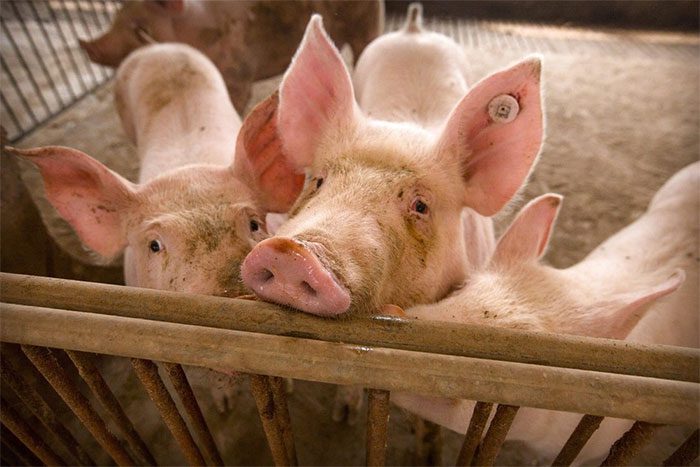Chinese researchers have announced the creation of a genetically modified pig breed that is immune to a virus causing AIDS-like symptoms in pigs.
According to the South China Morning Post, the research was led by Hua Jinlian from Northwest A&F University and Wei Hongjiang from Yunnan Agricultural University. The researchers stated that this technique could be applied to develop other desired traits in animals, such as breeding pigs for leaner meat and producing breeds suitable for human organ donation.

Image source: AP
The study was published in the peer-reviewed journal Zoological Research in early October. It describes a process that combines gene editing techniques with embryo technology, providing a safe and effective strategy for gene editing in domesticated animals.
The disease, known as Porcine Reproductive and Respiratory Syndrome (PRRS), can suppress the immune system, damage organs, lead to reproductive disorders in sows, result in high mortality rates in piglets, and cause respiratory diseases in adult pigs. PRRS is widespread and considered one of the most damaging diseases in the pig farming industry. Estimates suggest that approximately 75% of livestock in the United States and 80% in China are infected with this virus. Once infected, pigs carry the virus for life.
Researchers Hua and Wei discovered a new method to prevent the PRRS virus from infecting pigs at its source. Their team identified a gene segment associated with this virus. They then used an enzyme to cut the corresponding position in the DNA of pig embryos, resulting in piglets that are immune to the virus.
However, identifying the correct gene segment to target is not an easy task. According to Hua, the research team began investigating this issue in 2015. Scientists have been studying embryo technology since the 1980s.
“There are about 3 billion base pairs in this genome. First, we need to know the exact location on the gene pair, and then we use a specific tool – an enzyme – to modify the gene at a specific site,” Hua stated in an interview on October 18. The research team also deleted genes that inhibit muscle growth to create pigs with leaner meat.

China is the world’s largest consumer of pork. (Image: Reuters).
To edit the second trait, researchers typically have to wait for the first generation of genetically modified pigs to grow up and reproduce, a process that takes over a year. They then conduct a second round of experiments on their offspring. However, the research team has developed a synchronized gene editing method that can perform two modifications in one edit, saving time and costs.
Nonetheless, scientists note that the success rate of this technique is not 100%. The process is influenced by many factors, including the quality of the embryos and the survival rate of the surrogate sows. Reports indicate that only 1 in 3 sows involved in the experiment successfully gave birth, resulting in 2 piglets.
China is the world’s largest consumer of pork, consuming approximately 700 million pigs per year. This new research could further advance the breeding of domesticated pigs with multiple genetic modifications at a lower cost.
“Currently, this technology is at an advanced global level in terms of efficiency and cost. The next step is to further evaluate the resistance to the PRRS virus and assess whether this trait is stably inherited,” Hua stated.
When the new technology is perfected, researchers hope to implement other gene edits, such as improving metabolism in pigs to eliminate or reduce manure odor and creating smaller pig breeds suitable for organ donation.





















































